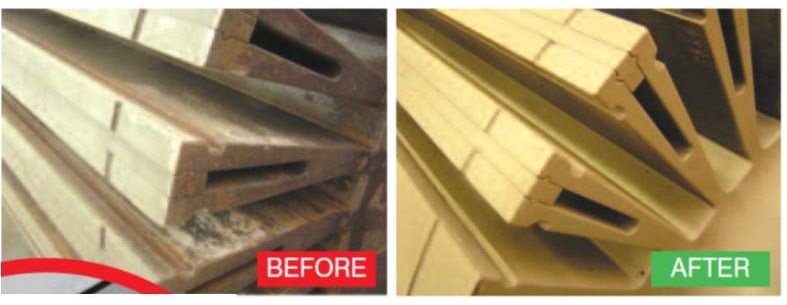 Energice International provide a range of hybrid equipment cleaning services including sponge blast cleaning. A sponge blasted turbine generator rotor is shown to the right.
Energice International provide a range of hybrid equipment cleaning services including sponge blast cleaning. A sponge blasted turbine generator rotor is shown to the right.
Sponge Blast cleaning is designed to deliver cleaning speed and decrease dust in the removal of paint, rust and other coatings when compared with other more traditional methods such as sand/grit blasting.
The process is similar in principle to dry ice blasting, as relatively soft sponge particles are accelerated in a pressurised air stream and directed at the surface to be cleaned. As such, sponge blast cleaning is an effective cleaning process that can be used in a wide variety of applications.
Sponge Blast Cleaning General Advantages
Sponge Blast Cleaning General Advantages
Sponge blasting reduces dust and abrasive ricochet. This allow project managers to consolidate and schedule other trades to work in close proximity therefore tasks which are normally delayed because of operational environment constraints, can now be accomplished simultaneously by Sponge Blasting. This has the significant advantage of shortening project schedules and reduce the high costs of downtime.
Sponge blast cleaning can also be used in relatively confined environments as it generates significantly less dust than sand/grit blasting and less CO2 gas than dry ice blasting. It is also a little more flexible than dry ice cleaning as the storage life of the sponge media is not as restrictive as dry ice.
Sponge Blast Cleaning Applications
Sponge Blast Cleaning Applications
Sponge blast cleaning is ideal for cleaning dis-assemblied equipment at component level, including shafts, rotors and screws.
It can be used to clean certain equipment assemblies, but as it is a soft abrasive means of cleaning, care must be taken when working with complex, sensitive assemblies such as electric motors with wiring. Other types of sensitive equipment, which are normally effected by blasting operations, and as such, should be protected prior to using sponge blasting, include;
- Mechanical seals
- Compressors, turbines, rotors and stators
- Motors
- Rotating equipment and bearings
- Hydraulic and pneumatic cylinders
- Exchangers
Sponge blast cleaning is commonly used in construction projects or to clean architectural sculptures, where dusty conditions associated with ordinary blasting is not acceptable.
